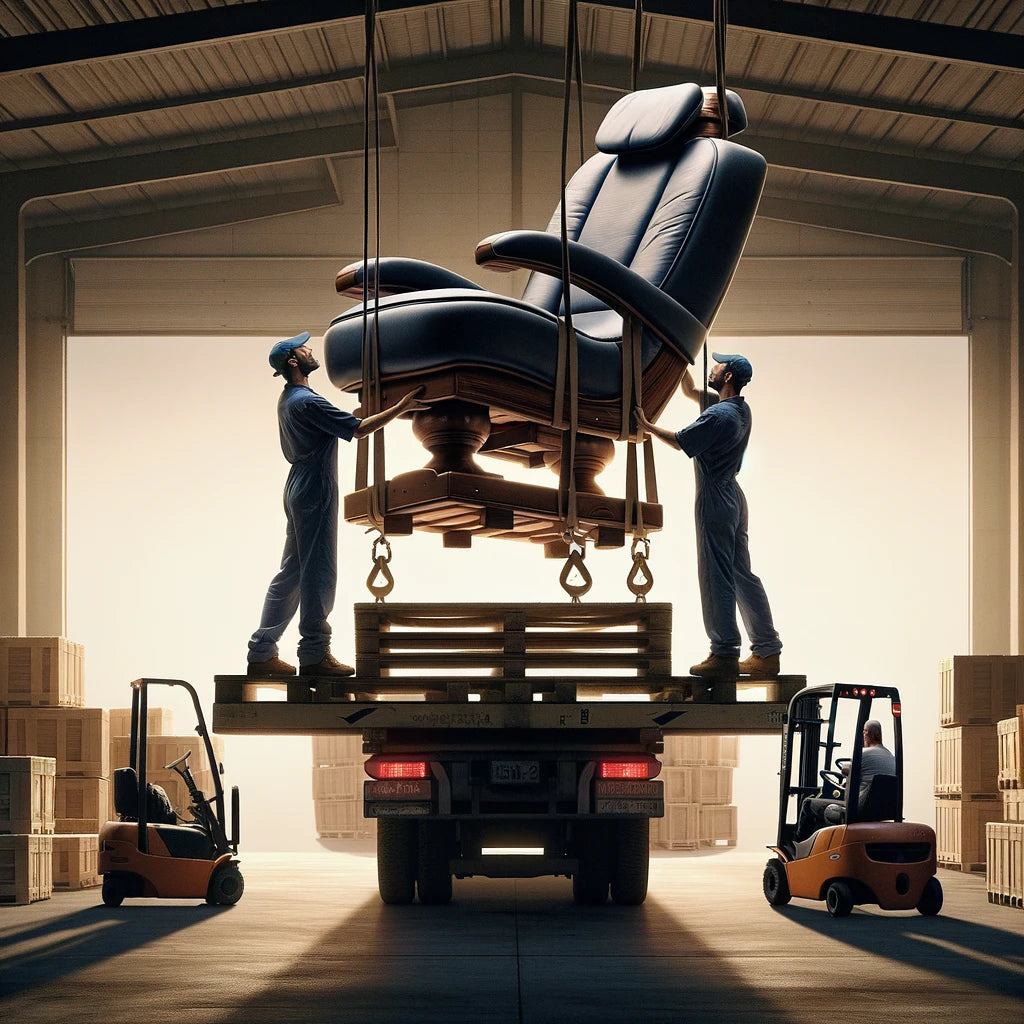
Transporting massage chairs correctly
Massage chairs not only provide comfort and relaxation, but are also an investment in our well-being. Therefore, it's important to treat them with care, especially when it comes to transport. In this guide, we'll walk you through the process of transporting a massage chair safely and effectively from one location to another.
Introduction to the transport of massage chairs
Massage chairs are complex devices with many moving parts and electronic components. Improper transport can result in damage that is not only costly to repair but can also impair the chair's functionality. Therefore, it is essential to plan and execute the transport carefully.
Why the right transport method is important
Choosing the right transport method not only protects the massage chair from damage but also ensures the safety of those transporting it. Furthermore, efficient preparation can save time and money.
Preparing the massage chair for transport
Cleaning and inspection
Before packing your massage chair, you should thoroughly clean it and inspect it for any damage or loose parts. This ensures the chair is transported in the best possible condition and facilitates assembly at its destination.
The importance of considering angles and door dimensions
Massage chairs are typically bulky and heavy, making them difficult to transport through narrow passageways. Considering angles and door dimensions is crucial to avoid damage to the chair or property. Accurate measurements and planning will allow you to determine the best route through your home or office and ensure the massage chair arrives at its destination undamaged.
Measurement and planning
Before you begin transporting your massage chair, measure its dimensions and compare them with the dimensions of the doorways, passageways, and hallways it will need to pass through. Consider not only the width and height, but also the depth of the chair. Plan the transport route to allow sufficient maneuverability, and consider whether disassembling the chair might make transport easier.
Techniques for safe maneuvering
Maneuvering a bulky massage chair through tight spaces requires skill and patience. One effective method is to use dollies or a hand truck to make moving the chair easier. When moving the chair, it's important to proceed slowly and carefully to avoid sudden movements that could damage the chair or the surrounding area.
The role of angles in transport
Angles play a crucial role in transporting massage chairs. In many cases, tilting or rotating the chair at a specific angle can make the difference between fitting through a doorway or not. Experiment with different angles to maneuver the chair through narrow passages, and be prepared to adjust your strategy if you encounter obstacles.
Disassembly (if necessary)
Some massage chairs can be disassembled for transport. This can make transport easier and reduce the risk of damage. Consult the owner's manual to see if and how disassembly is possible.
Packaging materials and techniques
Using the right packaging materials and techniques is crucial to prevent damage to your massage chair. Bubble wrap, stretch wrap, and sturdy boxes are recommended. Make sure all parts are packed securely and securely.
Means and methods of transport
Choosing the right vehicle
Not every vehicle is suitable for transporting a massage chair. The size and weight of the chair often require a van or truck. Make sure the vehicle is large enough and has a suitable loading area.
Safety measures during loading
When loading the massage chair, safety precautions must be observed. Use tools such as hand trucks or dollies, and secure the chair in the vehicle to prevent it from slipping.
On the go with the massage chair
During transport, you should check the massage chair regularly to ensure it is secure. Avoid bumpy roads and drive carefully to avoid sudden movements.
Arrival and follow-up
Unloading and placement
When unloading the massage chair, you should proceed with the same care as when loading it. Carefully place the chair in its new location and remove the packaging materials.
Assembly and functional testing
If the massage chair has been disassembled, follow the instruction manual to reassemble it. Then, check all functions to ensure the chair is working properly.
Common mistakes and how to avoid them
Overview of common errors
Common mistakes when transporting massage chairs include inadequate packaging, using unsuitable means of transport, and neglecting safety measures.
Tips for avoiding mistakes
To avoid these mistakes, plan transportation carefully, use the correct materials and methods, and follow safety guidelines.
Conclusion
Transporting a massage chair requires preparation, care, and attention. By following the recommendations outlined here, you can ensure your massage chair arrives at its new location safe and undamaged.
FAQs
-
Can I transport a massage chair alone? It's possible, but not recommended. Due to the size and weight of the chair, it's safer to have a second person assisting.
-
Do I need to disassemble the massage chair for transport? This depends on the model. Check the manual to see if disassembly is recommended or required.
-
How do I measure my massage chair and doorways correctly? Use a tape measure to measure the height, width, and depth of your massage chair. Compare these measurements to those of your doorways, hallways, and other doorways.
-
What should I do if the massage chair doesn't fit through the door? Consider disassembling it, or use different angles to maneuver the chair through the door. Sometimes it also helps to temporarily remove the door frame.
-
Can every massage chair be disassembled for easier transport? This depends on the model. Check the manual or contact the manufacturer to determine if disassembly is possible and safe.
-
Why are NAIPO massage chairs a good alternative for easier transportation? NAIPO massage chairs are often designed to be lighter and more compact, making them ideal for transportation and placement in tight spaces without sacrificing massage functions.
-
How can I ensure my massage chair isn't damaged during transport? Use protective materials like blankets or bubble wrap, plan the transport route carefully, and move the chair slowly and carefully to avoid collisions and sudden movements.







Leave a comment
This site is protected by hCaptcha and the hCaptcha Privacy Policy and Terms of Service apply.